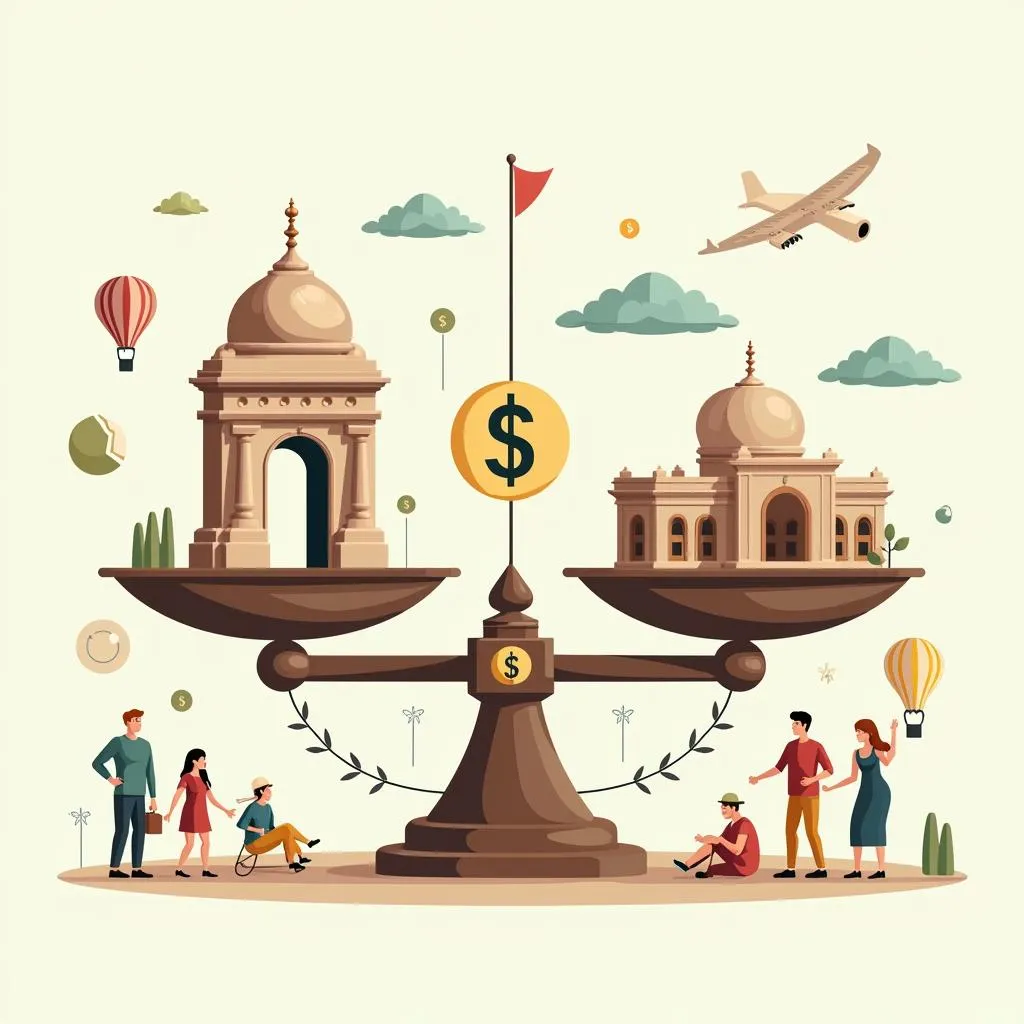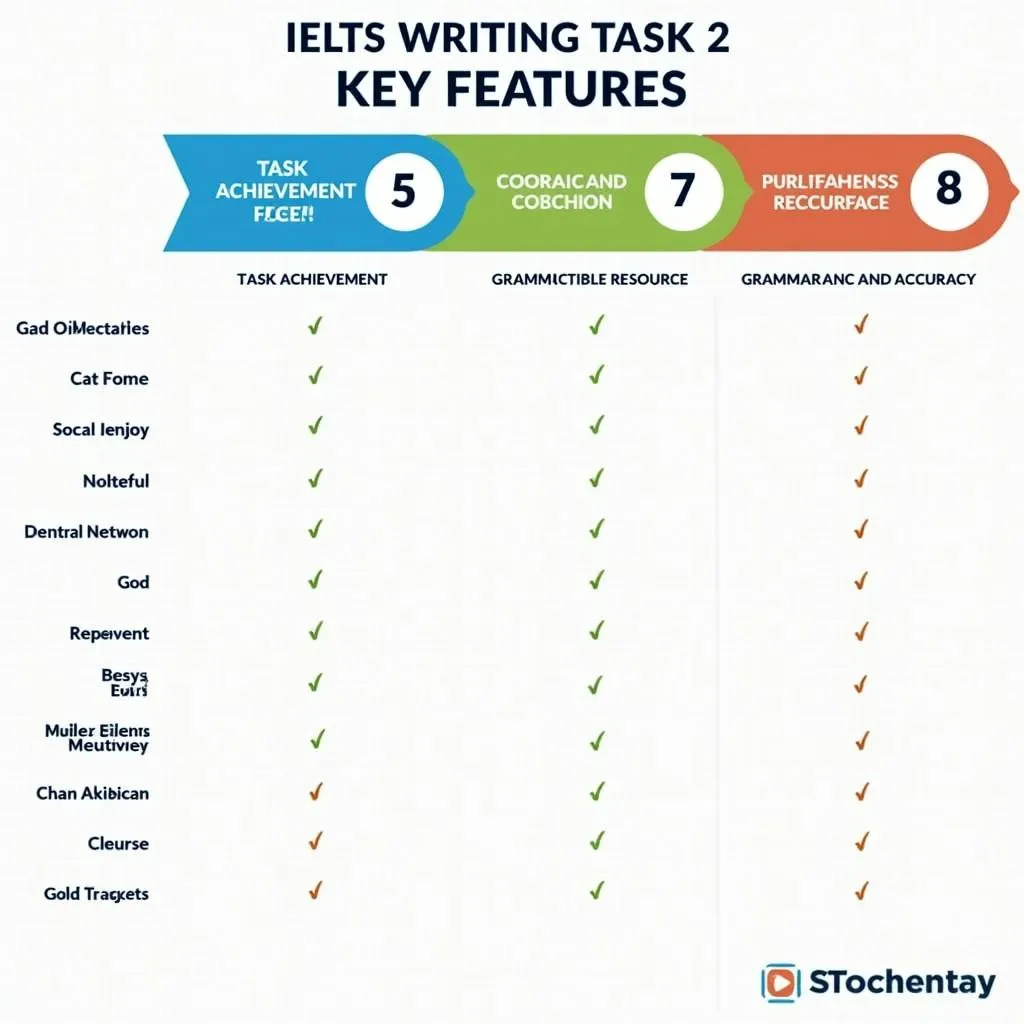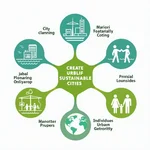Tourism has become a significant global phenomenon, affecting various aspects of society, including historical sites. This topic frequently appears in IELTS Writing Task 2 exams, making it essential for test-takers to be well-prepared. Based on past exam trends and current global issues, we can expect questions related to “the impact of tourism on historical sites” to remain relevant in future IELTS tests. Let’s explore this topic through sample essays and in-depth analysis.
Analyzing the Question
Some people believe that tourists should pay more to visit historical sites to help with their preservation, while others think this would discourage tourism. Discuss both views and give your own opinion.
This question presents two contrasting views on funding the preservation of historical sites through tourism. It requires you to:
- Discuss the argument for increasing tourist fees to support preservation
- Explore the counter-argument that higher fees might discourage tourism
- Provide your own perspective on the issue
Let’s examine sample essays for different band scores, starting with a high-scoring response.
Sample Essay 1 (Band 8-9)
Tourism plays a crucial role in showcasing a nation’s heritage, but it also raises concerns about the preservation of historical sites. While some argue for increased entry fees to fund conservation efforts, others worry this may deter visitors. In my opinion, a balanced approach that considers both preservation needs and tourism accessibility is essential.
Proponents of higher fees argue that the additional revenue is necessary for maintaining and restoring historical sites. Ancient structures and artifacts require constant care, which can be extremely costly. By charging tourists more, site managers can invest in advanced preservation techniques, hire skilled conservators, and implement protective measures against wear and tear caused by high visitor traffic. For example, the increased entry fees at Machu Picchu in Peru have allowed for better crowd control and the implementation of eco-friendly practices, ensuring the site’s longevity.
On the other hand, critics contend that raising entry fees could significantly reduce visitor numbers, potentially harming local economies and cultural exchange. Many historical sites are located in developing countries where tourism is a vital source of income for local communities. Higher prices might make these destinations inaccessible to budget travelers, students, and families, limiting cultural understanding and appreciation. Moreover, reduced visitor numbers could lead to less overall revenue, paradoxically undermining preservation efforts.
In my view, a nuanced strategy is necessary to balance these competing concerns. Instead of implementing across-the-board fee increases, site managers could consider tiered pricing systems. This approach could include discounted rates for locals, students, and off-peak visitors, while charging premium prices for peak seasons or exclusive experiences. Additionally, the influence of global brands on local cultures could be leveraged through corporate sponsorships and partnerships to supplement preservation funds without solely relying on tourist fees.
Furthermore, educating visitors about the importance of preservation and offering opportunities for voluntary contributions could foster a sense of shared responsibility. By engaging tourists in conservation efforts, historical sites can create a more sustainable model of tourism that benefits both the sites and their visitors.
In conclusion, while increasing entry fees for historical sites may seem like a straightforward solution for preservation, it’s crucial to consider the potential negative impacts on tourism and cultural exchange. A multifaceted approach that combines reasonable pricing, alternative funding sources, and visitor education is more likely to achieve the dual goals of preserving historical treasures and promoting global cultural understanding.
 Balancing historical site preservation and tourism
Balancing historical site preservation and tourism
Sample Essay 2 (Band 6-7)
The preservation of historical sites is important, but there are different opinions on how to fund it. Some people think tourists should pay more to visit these places, while others believe this would reduce tourism. I will discuss both views and give my opinion.
Those who support higher entry fees argue that the extra money is needed to protect historical sites. Old buildings and artifacts need a lot of care, which can be expensive. By charging tourists more, site managers can pay for better preservation methods and hire experts to look after the sites. This could help keep these important places in good condition for future generations to enjoy.
However, others worry that increasing prices would stop many people from visiting historical sites. If tickets become too expensive, fewer tourists might come, especially those on a budget. This could be bad for local businesses that depend on tourism. Also, it might mean that fewer people get to learn about different cultures and history, which is one of the main benefits of visiting these places.
In my opinion, I think there should be a middle ground. Instead of just raising prices for everyone, historical sites could have different prices for different groups. For example, they could offer cheaper tickets for students, local people, or visitors who come during less busy times. They could also ask for donations or look for sponsors to help with preservation costs.
It’s also important to teach visitors about why preservation is necessary. If tourists understand how their money helps to protect these sites, they might be more willing to pay a bit extra or make voluntary donations.
To conclude, while preserving historical sites is crucial, we need to find ways to do this without making tourism too expensive. A combination of reasonable pricing, education, and alternative funding sources could help achieve this balance.
Sample Essay 3 (Band 5-6)
Historical sites are important for learning about the past. Some people think tourists should pay more money to visit these places, but others think this is not a good idea. I will talk about both sides and give my opinion.
People who want higher prices say it will help keep historical places in good condition. Old buildings need a lot of money to fix and protect. If tourists pay more, there will be more money to take care of these places. This is good because it means the sites will last longer for people to see in the future.
But other people think higher prices are bad. They say if tickets cost too much, fewer people will visit. This could be a problem for local shops and hotels that need tourists to make money. Also, if fewer people visit, less people will learn about history and different cultures.
I think both sides have good points. Maybe there could be different prices for different people. Like cheaper tickets for students or local people. Also, they could ask for donations instead of making everyone pay more.
It’s also a good idea to tell visitors why it’s important to take care of historical places. If people understand, they might be happy to pay a little more or give extra money to help.
In conclusion, we need to find a way to protect historical sites without making it too expensive for people to visit. I think having different prices and teaching people about preservation could be a good solution.
The effects of cultural globalization on national identities are also relevant to this discussion, as tourism can both promote cultural exchange and potentially dilute local traditions.
Explanation of Band Scores
Band 8-9 Essay:
- Task Achievement: Fully addresses all parts of the task with a well-developed response.
- Coherence and Cohesion: Ideas are logically organized with clear progression throughout.
- Lexical Resource: Wide range of vocabulary used with flexibility and precision.
- Grammatical Range and Accuracy: Wide range of structures used accurately and appropriately.
Band 6-7 Essay:
- Task Achievement: Addresses all parts of the task, though some aspects are more fully covered than others.
- Coherence and Cohesion: Information and ideas are generally well organized, with clear overall progression.
- Lexical Resource: Sufficient range of vocabulary for the task, with some attempts at less common words.
- Grammatical Range and Accuracy: Mix of simple and complex sentence forms, with generally good control.
Band 5-6 Essay:
- Task Achievement: Addresses the task, but the format may be inappropriate in places.
- Coherence and Cohesion: Information and ideas are arranged coherently, but there may be a lack of overall progression.
- Lexical Resource: Adequate range of vocabulary for the task, but usage may lack precision.
- Grammatical Range and Accuracy: Limited range of structures with some attempt at complex sentences.
 IELTS Writing Task 2 Band Score Comparison
IELTS Writing Task 2 Band Score Comparison
Key Vocabulary to Remember
-
Preservation (noun) – /ˌprezərˈveɪʃən/ – The act of maintaining something in its original state or protecting it from harm or decay.
-
Heritage (noun) – /ˈherɪtɪdʒ/ – Valued objects and qualities such as cultural traditions, unspoiled countryside, and historic buildings that have been passed down from previous generations.
-
Conservation (noun) – /ˌkɒnsərˈveɪʃən/ – The action of preserving, protecting, or restoring the natural environment, natural ecosystems, vegetation, and wildlife.
-
Artifact (noun) – /ˈɑːtɪfækt/ – An object made by a human being, typically one of cultural or historical interest.
-
Deterioration (noun) – /dɪˌtɪərɪəˈreɪʃən/ – The process of becoming progressively worse.
-
Sustainable (adjective) – /səˈsteɪnəbəl/ – Able to be maintained at a certain rate or level.
-
Cultural exchange (noun phrase) – /ˈkʌltʃərəl ɪksˈtʃeɪndʒ/ – The interchange of cultural concepts and ideas between different groups or nations.
-
Revenue (noun) – /ˈrevənjuː/ – Income, especially when of an organization and of a substantial nature.
-
Accessibility (noun) – /əkˌsesəˈbɪləti/ – The quality of being able to be reached or entered.
-
Nuanced (adjective) – /ˈnjuːɑːnst/ – Characterized by subtle shades of meaning or expression.
How globalization affects cultural identity is another important concept to consider when discussing the impact of tourism on historical sites and local cultures.
Conclusion
The impact of tourism on historical sites is a complex issue that requires careful consideration of various factors. As you prepare for your IELTS Writing Task 2 exam, remember to analyze the question thoroughly, structure your essay logically, and use a range of vocabulary and grammatical structures appropriate to your target band score.
To further improve your writing skills, try practicing with similar topics such as:
- The role of technology in preserving historical sites
- Balancing tourism development with environmental protection
- The economic impact of cultural tourism on local communities
- Ethical considerations in promoting historical sites as tourist attractions
Remember to focus on developing well-reasoned arguments and supporting them with relevant examples. We encourage you to practice writing your own essay on this topic and share it in the comments section below for feedback and discussion. This active practice is an excellent way to enhance your IELTS Writing skills and prepare for success in your upcoming exam.
The influence of global media on local traditions is another related topic that you might encounter in IELTS Writing Task 2, as it intersects with the themes of cultural preservation and the impact of globalization on local heritage sites.


